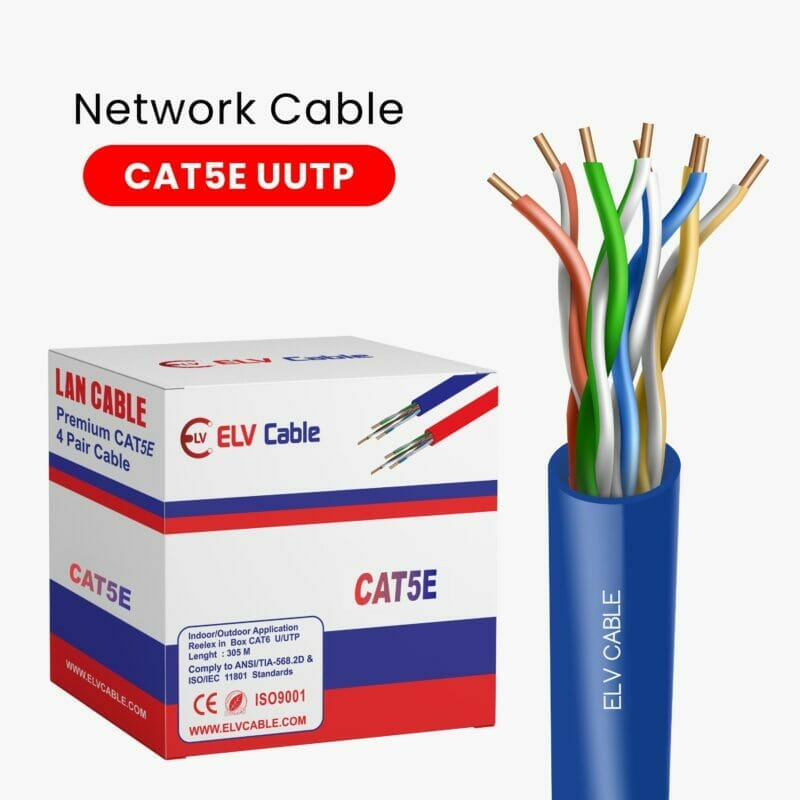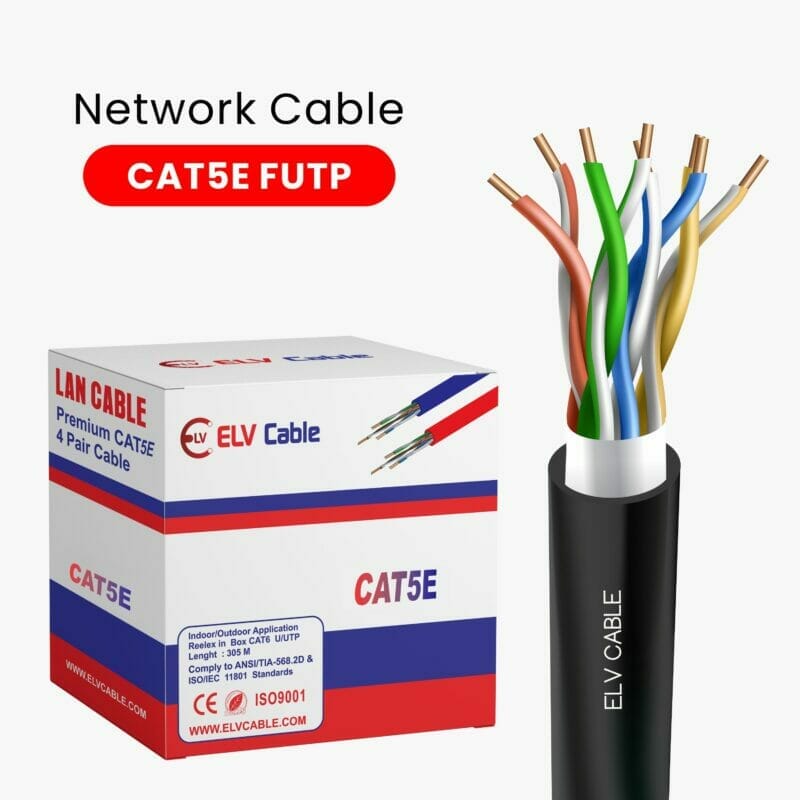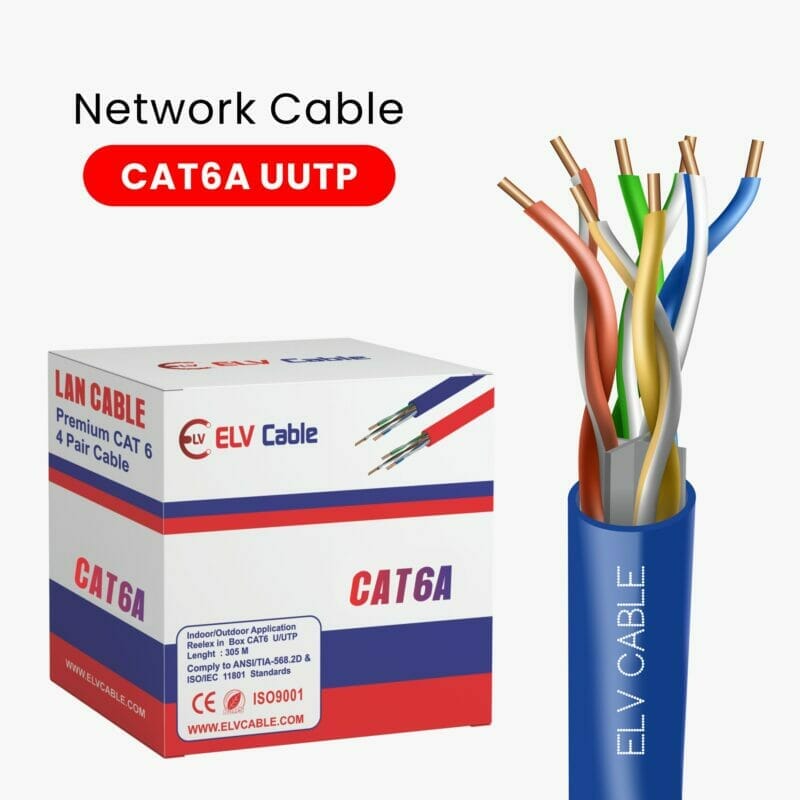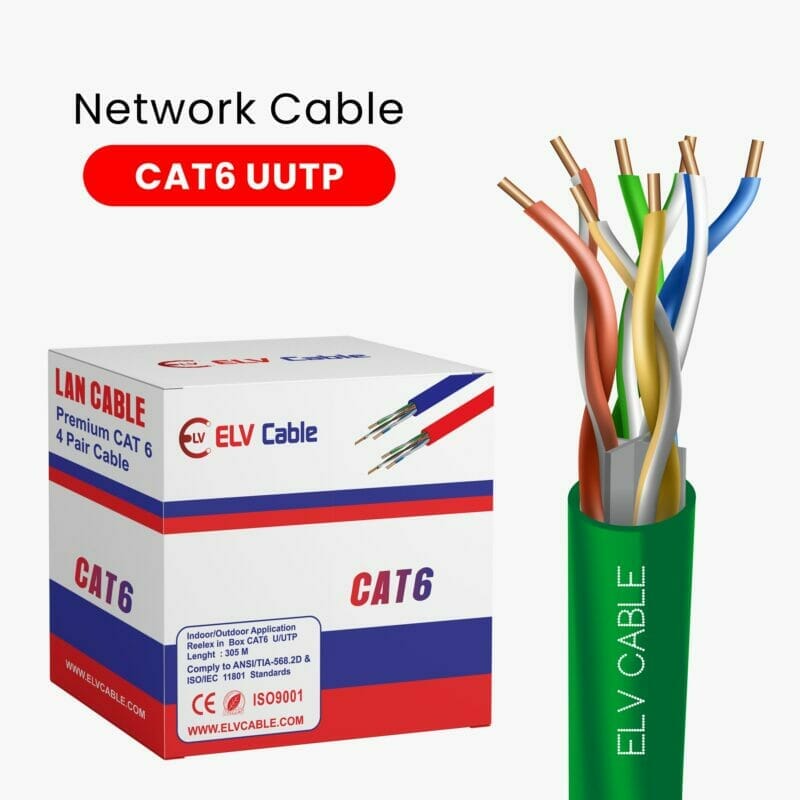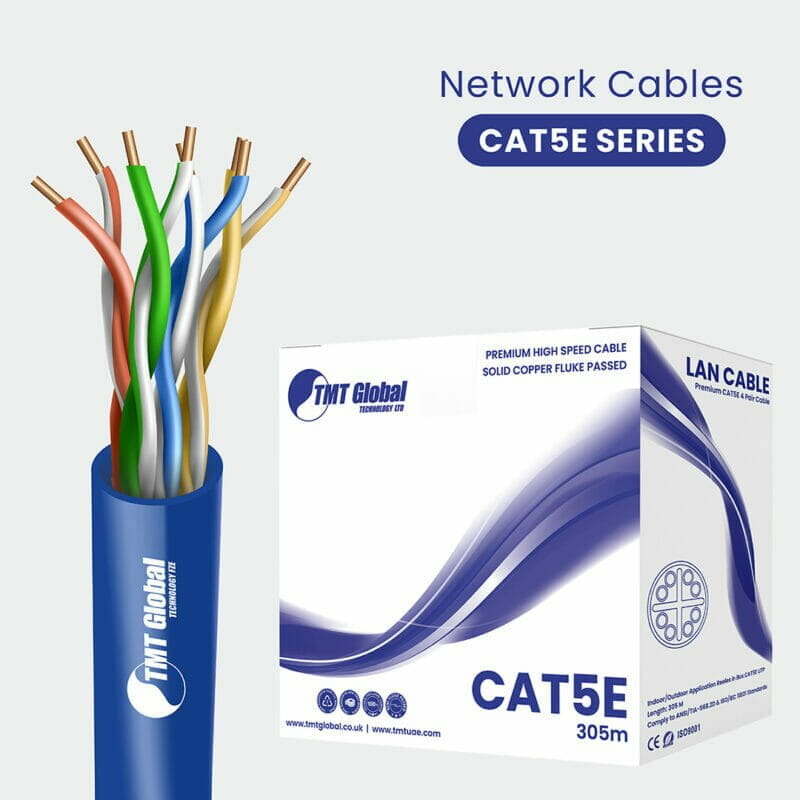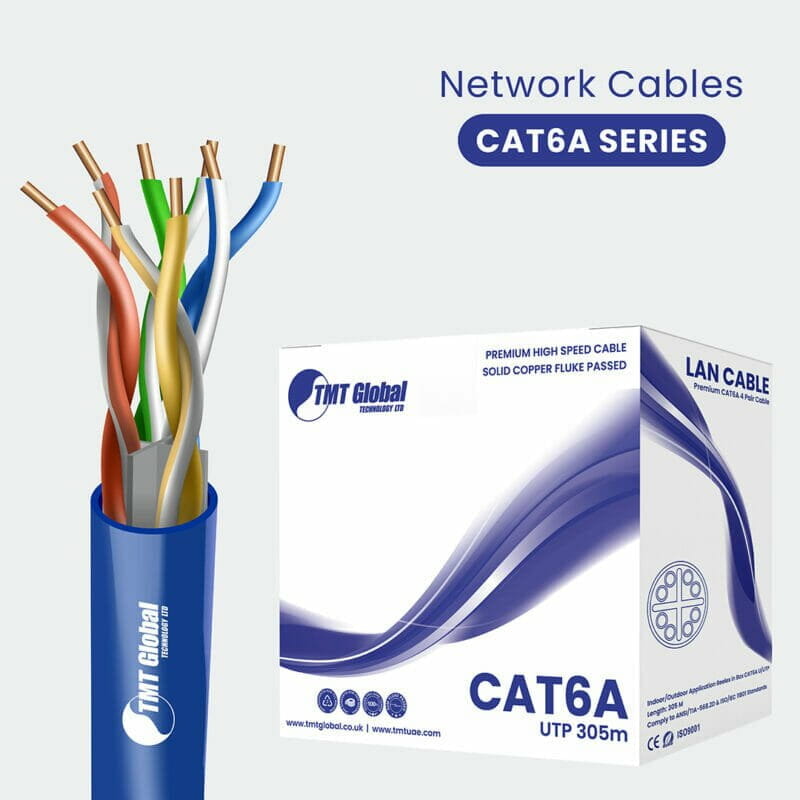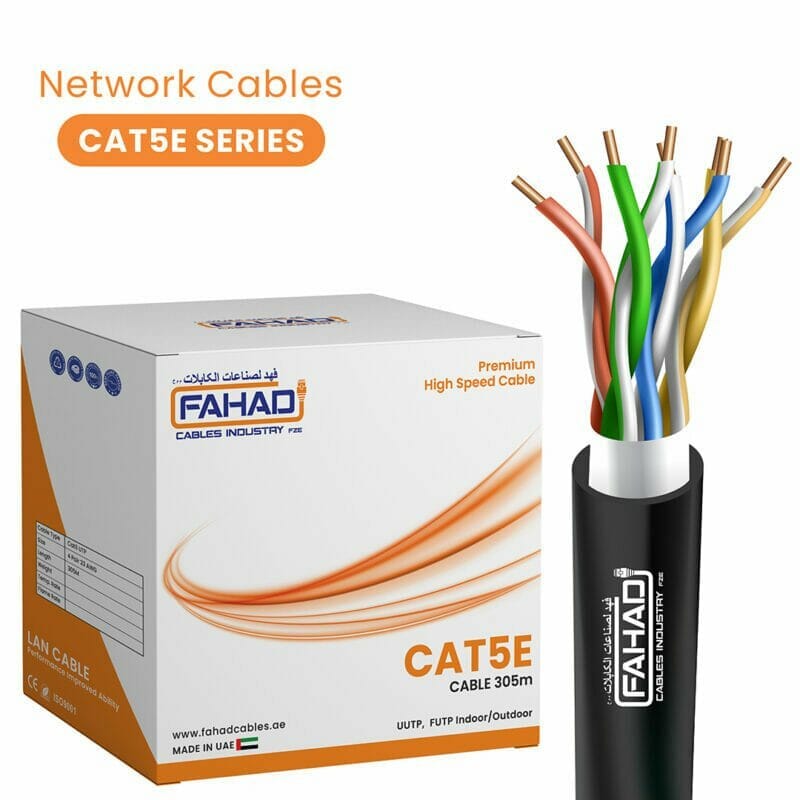- Network Cables
- Coaxial Cables Series
- Data Patch cord
- Network Cabinets
- Network Accessories
- Fiber Products
- Control Cables
- Gate Automation
- Access Control systems
- CCTV Systems
- Motion Sensor
Understanding the Physical Differences Between Cat5 and Cat5e Cables: Insights from TMT Global Technology Ltd UK

Introduction to Networking Cables
In today’s digital age, networking cables serve as the backbone of telecommunications and data transmission. They facilitate the connection between devices, enabling the efficient flow of information over local area networks (LANs) and beyond. Among the various types of Ethernet cables available, Cat5 and Cat5e cables have become significant due to their widespread use and adaptability in diverse networking environments.
The Category 5 (Cat5) cable specification, introduced in the early 1990s, supports data rates of up to 100 Mbps, making it suitable for basic internet connectivity and computer networking needs. However, with the growing demand for faster data transmission and improved performance, the Category 5 Enhanced (Cat5e) cabling standard emerged. Cat5e cables are designed to reduce crosstalk, enhance signal quality, and support higher bandwidths, allowing for data rates of up to 1 Gbps (1000 Mbps). This upgrade has made Cat5e the preferred choice in many modern installations.
Understanding the differences between these two types of cables is crucial for consumers and professionals alike. For consumers, selecting the appropriate cabling can significantly affect their internet speed and connectivity. Professionals in the networking industry must be proficient in recognizing the specifications and limitations of each cable type to ensure optimal network performance. Such knowledge not only aids in making informed purchasing decisions but also in troubleshooting and enhancing existing network infrastructures.
In conclusion, thorough comprehension of networking cables like Cat5 and Cat5e, along with their physical differences and capabilities, is essential for anyone involved in telecommunications. As technology continues to evolve, staying informed about the latest cabling standards remains paramount to maintaining efficient and robust connectivity.
What is Cat5 Cable?
Category 5 (Cat5) cables are a standard type of twisted pair cable primarily used for Ethernet networks. These cables are designed to handle maximum transmission speeds of up to 100 Mbps, making them suitable for various communication requirements. They operate effectively within a frequency range of 100 MHz, which allows for optimal data transmission across local area networks (LANs).
In terms of construction, Cat5 cables typically consist of four pairs of insulated copper wires, totaling eight conductors. These conductors are twisted together to reduce electromagnetic interference (EMI) and maintain signal integrity over longer distances. The standard wiring arrangement used in Cat5 cables follows the TIA/EIA-568-A or TIA/EIA-568-B wiring schemes, which dictate the color codes and pairing of the wires within the cable.
Cat5 cables are made from high-quality copper to ensure effective electrical conductivity, contributing to their reliability as a networking solution. The outer insulation is typically made of durable PVC (polyvinyl chloride), which protects the internal wires from physical damage and environmental factors. Each cable may be found in several variations, including unshielded twisted pair (UTP) and shielded twisted pair (STP) forms. While UTP cables are more common, STP cables provide additional shielding to protect against interference, making them suitable for environments with high electromagnetic activity.
Common uses of Cat5 cables include residential and commercial networking applications, such as connecting computers, printers, and routers in a LAN setup. This type of cable is also utilized for telephone systems and video surveillance, ensuring efficient data transfer and communication. Despite its limitations in speed and bandwidth compared to newer standards like Cat5e and Cat6, Cat5 remains a viable option for basic networking needs and applications.
What is Cat5e Cable?
Category 5e (Cat5e) cables are an enhanced version of the earlier Category 5 (Cat5) standards, designed to improve network performance and reliability. The primary advancements associated with Cat5e cables encompass higher transmission speeds, increased bandwidth, and reduced crosstalk, which significantly enhances data integrity and overall network efficiency.
One of the notable improvements of Cat5e over its predecessor is the capability to support data transmission speeds of up to 1,000 Mbps (1 Gbps). This is a considerable upgrade compared to the maximum speed of 100 Mbps offered by Cat5 cables. Additionally, Cat5e cables support frequencies of up to 100 MHz, which allows for a greater amount of data to be transmitted simultaneously. This makes Cat5e cables particularly suitable for modern networking applications, including those demanding substantial bandwidth, such as video conferencing and streaming.
The physical structure of Cat5e cables plays a pivotal role in these advancements. They are typically constructed with tighter twists in the wire pairs, which serves to minimize electromagnetic interference. This design reduces the chances of crosstalk occurring between pairs, leading to clearer signals during data transmission. Furthermore, Cat5e cables feature an improved insulation material that aids in maintaining signal integrity over extended distances. These enhancements are paramount, particularly in environments where numerous devices are connected, leading to potential signal degradation.
In various practical applications, such as home and office networking, the benefits of using Cat5e cables are evident. With their capacity to support higher speeds and reduce interference, they enable users to experience faster internet access and more reliable connections. Consequently, Cat5e cables have become a popular choice for both residential and commercial network setups, showcasing their superiority over traditional Cat5 options.
Physical Differences Between Cat5 and Cat5e Cables
When examining the physical construction of Cat5 and Cat5e cables, it becomes evident that various design elements play a crucial role in their performance. Both types of cables utilize twisted pair technology, but significant differences exist in their wire gauge and twist configurations. Cat5 cables typically consist of four twisted pairs of wires, generally using a 24 AWG (American Wire Gauge) standard. In contrast, Cat5e cables also feature four twisted pairs but implement stringent specifications allowing for tighter twists, which help to reduce crosstalk and enhance data transmission quality.
The insulation materials used in both Cat5 and Cat5e cables further contribute to their distinctiveness. Cat5 cables typically employ PVC (polyvinyl chloride) insulation, while Cat5e cables may incorporate improved insulation techniques to mitigate environmental factors that can cause signal degradation. This enhanced insulation is particularly important in environments where electromagnetic interference (EMI) is prevalent, as it aids in maintaining signal integrity and reducing attenuation.
Furthermore, the overall jacket design is another key aspect to consider. While both cables have a protective outer sheath, the Cat5e may feature a more robust construction designed to withstand greater physical wear and tear. Additionally, Cat5e cables are engineered to support higher data rates and increased bandwidth capabilities, making them more suitable for modern networking needs.
Visual aids such as diagrams comparing the internal structure, twist patterns, and insulation materials of both cable types can greatly enhance comprehension of these differences. By understanding the physical differences between Cat5 and Cat5e cables, consumers and IT professionals can make informed decisions regarding cable selection to optimize network performance.
Testing and Performance Metrics
The distinction between Cat5 and Cat5e cables is not merely theoretical; it has practical implications that can be precisely measured through various performance metrics. Testing methods are crucial for evaluating critical parameters such as bandwidth, speed, and signal integrity. TMT Global Technology Ltd UK implements a range of testing techniques to ensure their cables perform optimally and align with industry standards.
One of the primary metrics for assessing the performance of these cables is bandwidth, which refers to the maximum rate of data transfer across a network. While Cat5 cables are typically rated for speeds up to 100 Mbps, Cat5e cables can support speeds up to 1 Gbps due to enhancements in their design. This increase in performance is assessed using specialized testing equipment like network analyzers, which evaluate how well the cables transmit data under different conditions.
Speed tests assess how quickly data can be sent and received over the cables. The testing involves setting up a controlled environment where both Cat5 and Cat5e cables are connected to similar devices, followed by a series of data transfer trials. The results provide tangible evidence of the speed differences between the two types of cables, confirming that Cat5e cables deliver superior performance.
Another critical parameter is signal integrity, which refers to the quality of the signal as it travels along the cable. Signal loss can occur due to various factors, including interference and cable construction. TMT Global Technology Ltd UK employs rigorous testing protocols, including Near-End Crosstalk (NEXT) and Return Loss testing, to ensure that their Cat5e cables maintain optimal signal quality, reducing the risk of disruptions in network communication.
Overall, these comprehensive testing methods are essential for validating the performance claims of Cat5 and Cat5e cables, allowing users to make informed decisions based on verifiable data.
Real-World Applications: When to Use Cat5 vs. Cat5e
When deciding between Cat5 and Cat5e cables, it is essential to evaluate specific use cases and environments. Conventional Cat5 cables are adequate for straightforward home networking tasks, such as connecting personal computers, printers, and other peripheral devices in a modest local area network (LAN). This cable type supports transmission speeds of up to 100 Mbps, which suffices for general internet browsing, streaming, and basic file sharing, making it a feasible option for budget-conscious consumers.
On the other hand, Cat5e cables are engineered to surpass the performance of their predecessors. They can handle gigabit speeds up to 1000 Mbps, which provides a significant advantage for users who require robust data transfer rates, especially in enterprise-level installations. Businesses that rely on seamless connectivity, high-definition video conferencing, or large data migrations should consider investing in Cat5e. The enhanced specifications of Cat5e not only offer better performance but also reduce crosstalk and interference, leading to a more reliable network experience.
Future-proofing is another critical consideration when selecting between these two cable types. As technology evolves, the demand for higher bandwidth will increase. Opting for Cat5e may be a wise decision for businesses and households intending to upgrade their networking capabilities down the line. While Cat5 can suffice for rudimentary networking requirements, Cat5e’s versatility ensures it remains relevant as technology advances.
Insights from TMT Global Technology Ltd UK indicate that customers frequently lean towards Cat5e due to its superior performance and longevity, despite the marginal price difference. When choosing between these cables, it is crucial to align the selection with current needs and future expectations to make the most informed decision. Understanding the implications of each option will guide users towards an effective and economically sound networking solution.
Cost Differences and Value Analysis
When comparing Cat5 and Cat5e cables, one of the most significant considerations is the cost associated with each type. Pricing for these network cables can vary based on several factors, including material quality, manufacturing processes, and performance capabilities. Cat5 cables are generally less expensive than their Cat5e counterparts because they were designed to meet earlier standards of data transmission. The inherent limitations in bandwidth and speed make Cat5 cables suitable for basic applications, which can account for their lower price point.
However, as technology has evolved and the demand for higher data rates and improved network performance has increased, Cat5e cables have become more prevalent. Cat5e cables, an enhanced version of Cat5, are engineered to reduce crosstalk and allow for greater transmission speeds, reaching up to 1 Gbps over distances of 100 meters. Due to these enhancements, the production cost is higher, which is reflected in their market price. Consumers must, therefore, weigh the initial investment against long-term benefits.
When analyzing the value of Cat5 versus Cat5e, it is essential to consider the specific applications for which the cables will be used. For basic internet connections or networks that do not demand high bandwidth, Cat5 may suffice and save costs. Conversely, businesses and environments that require superior performance, such as data centers or environments with heavy network traffic, will find that investing in Cat5e cables will yield better reliability and speed in the long run.
Ultimately, the choice between Cat5 and Cat5e cables should be informed by an analysis of individual requirements, with an emphasis on balancing initial costs with future performance needs. Understanding these cost differences is vital for making informed purchasing decisions that align with specific networking goals.
Expert Opinions from TMT Global Technology Ltd UK
The landscape of Ethernet cabling technology is continually evolving, and the team at TMT Global Technology Ltd UK holds a robust perspective on the advancements associated with both Cat5 and Cat5e cables. The experts emphasize that while Cat5 cables remain a staple in many existing installations, the enhancements found in Cat5e cables provide significant advantages in terms of performance and reliability. According to industry veterans at TMT Global, the manufacturing quality of cabling significantly influences overall network efficiency.
One expert noted that the key innovation in Cat5e cables is their ability to reduce crosstalk, which can be detrimental to signal integrity and speed. This reduction is accomplished through improved twisting of the pairs and stricter specifications, which are pivotal for maintaining optimal transmission speeds over longer distances. TMT Global’s commitment to stringent quality control measures in their manufacturing processes ensures that their Ethernet cables not only comply with existing standards but also exceed them, thus offering superior performance.
Looking towards the future, the professionals at TMT Global believe that advancements in technology will continue to drive the evolution of Ethernet cabling. They anticipate that newer standards will emerge, potentially paving the way for Cat6 and Cat6a cables to become the norm, particularly in high-demand environments such as data centers and large office setups. However, the company remains confident in the longevity and reliability of Cat5e cables, asserting that their attributes allow them to maintain a competitive edge in an ever-changing market.
In conclusion, the insights from the technology experts at TMT Global Technology Ltd UK underscore the importance of both quality manufacturing and innovative practices in the production of Ethernet cabling. As the industry progresses, their commitment to excellence ensures that they will continue to thrive and meet the demands of their clientele effectively.
Conclusion
In reflecting on the differences between Cat5 and Cat5e cables, it is essential to emphasize the significance of their physical specifications and operational capabilities. Both types of cables serve critical roles in networking environments, but they present distinct advantages influenced by their construction and technology enhancements. Cat5 cables, while effective for basic networking tasks, have limitations in terms of data transmission speed, which can reach up to 100 Mbps and a frequency of 100 MHz. Conversely, Cat5e cables offer improved performance metrics, supporting data rates of up to 1000 Mbps and a higher frequency of 100 MHz, reducing the risk of interference and crosstalk.
These differences highlight the necessity of choosing the appropriate cable type based on specific networking requirements. For environments that demand higher bandwidth and greater reliability, Cat5e cables are undoubtedly the superior choice. However, for simpler applications, Cat5 cables may suffice, thus highlighting the need for users to assess their unique needs when selecting a cable.
Moreover, the role of quality manufacturers like TMT Global Technology Ltd UK cannot be overstated. Their commitment to quality production ensures that installers and users can depend on the integrity and performance of both Cat5 and Cat5e cables. Utilizing reliable products from esteemed manufacturers is essential to optimizing network performance and durability, preventing potential issues that may arise from subpar materials and construction.
Ultimately, understanding the physical differences and specifications of Cat5 and Cat5e cables empowers consumers and businesses to make informed decisions that align with their network requirements. This knowledge is crucial in an era where efficient and reliable connectivity is a foundational aspect of both personal and professional realms.
Network Cables Manufacturer
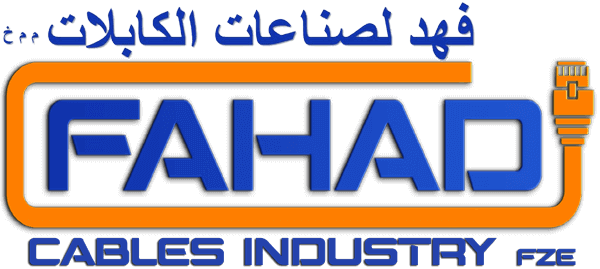
Fahad Cables Industries FZE is one of the most reputable manufacturers of network cables in the Middle East. Providing a happier, richer future through providing solutions for copper and optical communication for the past 20 Years. Founded an ultra-high-speed, multimedia world with full flash production facility in Sharjah Hamriya Free Zone (United Arab Emirates) to facilitate you throughout the telecommunication world. Cat6a Network cable TMT
FAHAD CABLES INDUSTRY FZE

